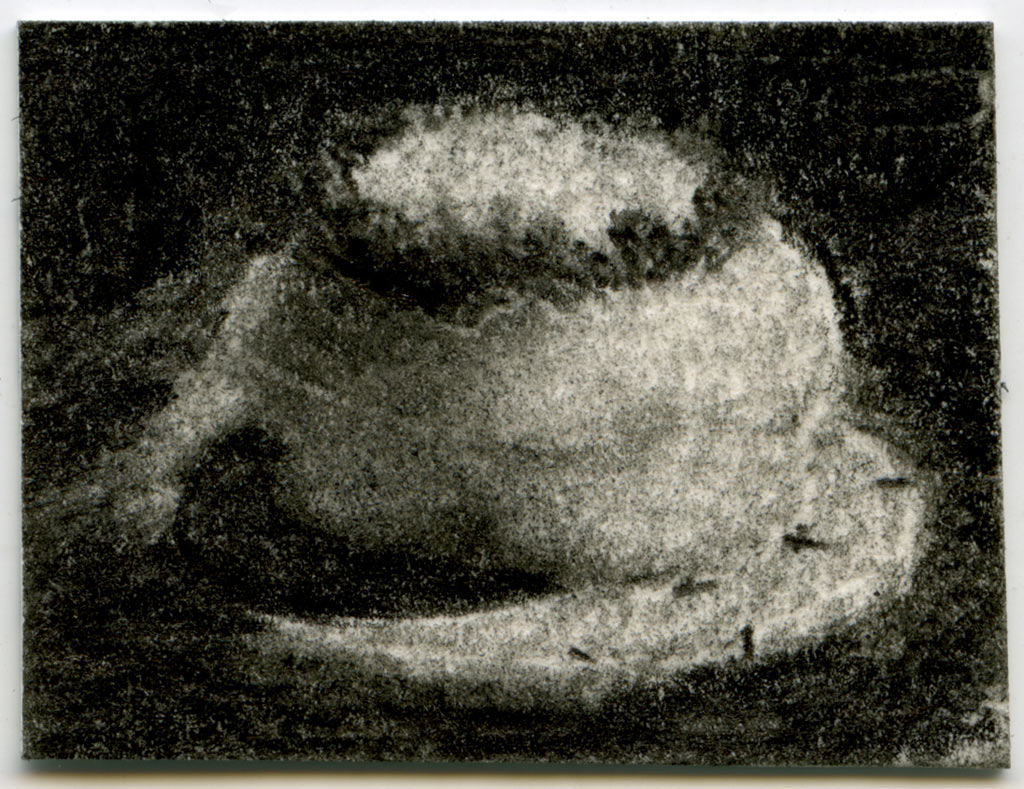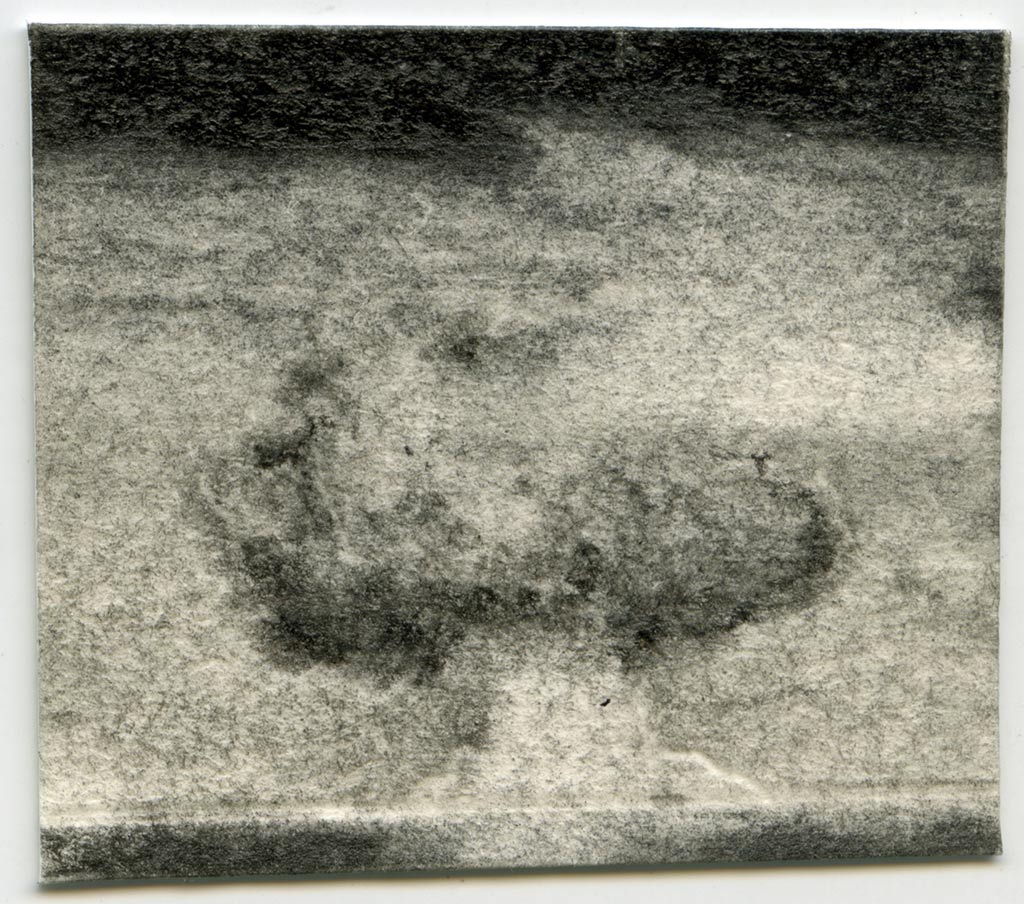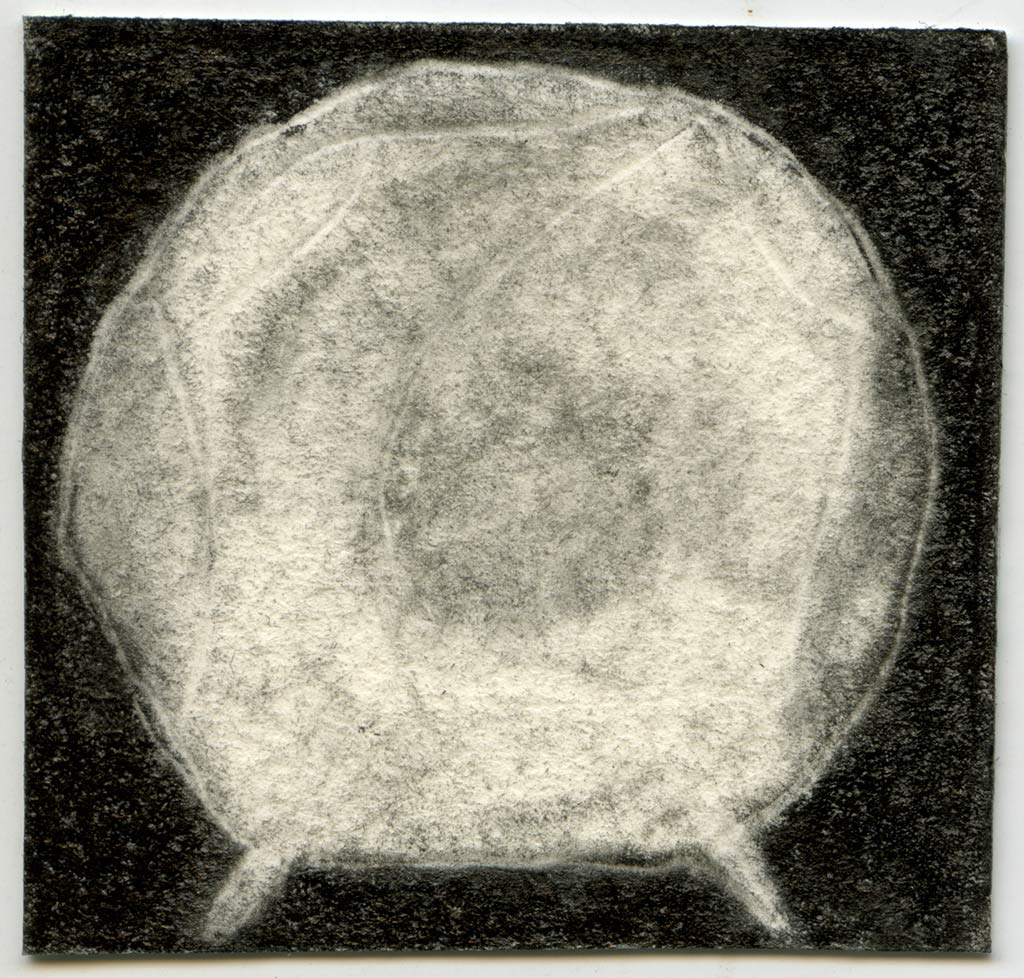The Pursuit of Happiness
Michael Mulvihill
7 February – 23 March 2013
Michael Mulvihill, ‘The Pursuit of Happiness’, 2013, installation view
‘The Pursuit of Happiness’ stands as an ironic title for Michael Mulvihill’s first solo exhibition for Vane, comprising a series of drawings that reveal the artist’s dark, apocalyptic vision. The phrase was first made famous in the United States Declaration of Independence, the second sentence of which reads: “We hold these truths to be self-evident, that all men are created equal, that they are endowed by their Creator with certain unalienable Rights, that among these are Life, Liberty and the pursuit of Happiness.”
Michael Mulvihill’s drawings are weighted with a sense of menace; his landscapes, urban scenes and even his portraits are all potential harbingers of threat, of disasters waiting to happen. The sense of foreboding is exacerbated by Mulvihill’s obsessive process: individual images are the result of heavily worked graphite pencil on cartridge paper, built up through repeated erasure and overdrawing, leaving a series of ‘ghosted’ images below the ‘final’ image itself. This successive rubbing out, inscribing into the surface of the paper itself, and the dull sheen of graphite all combine to create images that imply a world that, in the artist’s own words, is ‘in the process of dissolving’.
Michael Mulvihill, The End of History (Chicago 9), 2011, graphite on paper, 10x15.5cm
Michael Mulvihill, The End of History (Alexanderplatz), 2012, graphite on paper, 4 pieces, 10x14.5cm each
Michael Mulvihill, The End of History (Berlin), 2012, graphite on paper, 10x15cm
In the ‘The Pursuit of Happiness’ series the tiny scale of the drawings refers to the online thumbnails from where the images have been appropriated. One group depicts explosions from nuclear tests carried out by the United States and the Soviet Union during the arms race of the Cold War. The ever-increasing power of these weapons demonstrated the resolve with which each side pursued their respective ideologies and their own, very different, visions of society and happiness.
Other drawings from this series are portraits of some of the major players of the nuclear game. Some show Soviet cosmonauts, while others show members of the RAND Corporation – the global think tank, first formed to offer research and analysis to the United States armed forces – that devised strategies for fighting a nuclear war according to Game Theory. Like tokens in a board-game, the miniscule drawings stand as markers attempting to unveil and unravel the ideas and motivations of those leaders that dictated international policy and directed the history of the Cold War, a history that still resonates through to our lives today.
Michael Mulvihill, The End of History (Milton Friedman), 2010, graphite on paper, 10x14cm
Michael Mulvihill, The End of History (Chicago 8), 2011, graphite on paper, 10.5x15cm
Michael Mulvihill, The End of History (Herman Kahn), 2008, graphite on paper, 10x14cm
Michael Mulvihill, The End of History (Edward Teller), 2009, graphite on paper, 10x15.5cm
Michael Mulvihill, The End of History (Chicago 10), 2011, graphite on paper, 10.5x14cm
Michael Mulvihill, The End of History (John von Neuman), 2009, graphite on paper, 10.5x13.5cm
Take a video tour of the exhibition
Share this page
















